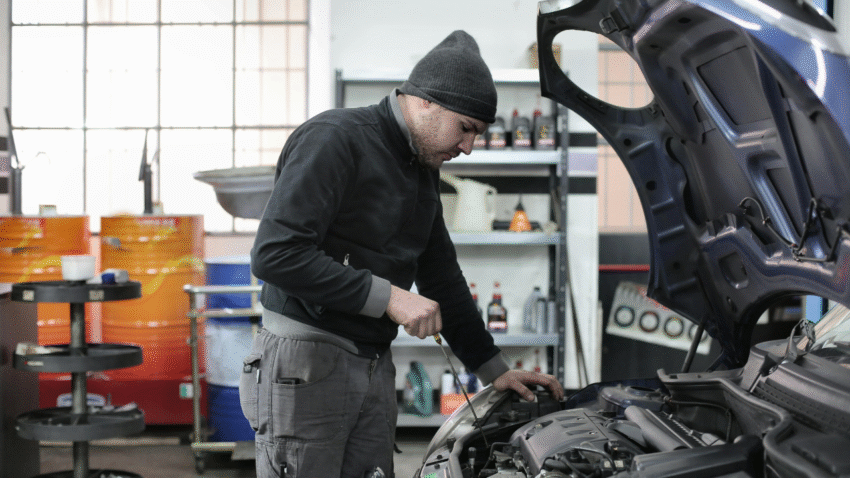Introduction
Garage door safety sensors are small but critical components that prevent your door from closing on people, pets, or objects. If they malfunction, your garage door could pose a serious safety risk. Learning how to test garage door safety sensors ensures your system works correctly and protects your family, belongings, and vehicles. The process is straightforward, requiring only a few basic tools and a few minutes of your time.
Why Testing Garage Door Safety Sensors Matters
Your garage door is one of the largest moving parts in your home, and it can be dangerous if the safety sensors fail. Regular testing offers several benefits:
- Prevent Accidents – Stops the door from closing on people, pets, or vehicles.
- Ensure Compliance – Most building codes require functioning safety sensors.
- Extend Lifespan – Properly aligned and clean sensors reduce strain on the opener.
- Peace of Mind – Confidence that your garage door is operating safely.
Safety sensors work by sending an invisible infrared beam across the bottom of the door opening. If anything interrupts that beam while the door is closing, the opener automatically reverses direction.
Step-by-Step Guide to Testing Garage Door Safety Sensors
1. Gather Your Supplies
Testing your garage door sensors doesn’t require much:
- Soft, dry cloth for cleaning
- Small object (e.g., cardboard box or broomstick)
- Measuring tape (optional, for checking sensor height)
2. Locate the Sensors
Safety sensors are installed on either side of the garage door opening, typically 4–6 inches above the floor, mounted to the vertical tracks or walls. Each sensor has a small LED light—one sends the beam (transmitter) and the other receives it (receiver).
3. Check for Indicator Lights
Before testing, confirm the sensors have power:
- The transmitter LED should be solid.
- The receiver LED should also be lit when the sensors are aligned.
If either light is off or blinking, the sensors may be misaligned, dirty, or disconnected.
4. Clean the Sensors
Dust, cobwebs, or dirt can block the infrared beam and cause false readings.
- Use a soft, dry cloth to gently wipe the sensor lenses.
- Avoid harsh chemicals that could damage the plastic.
- Recheck the LED lights after cleaning.
5. Inspect Sensor Alignment
If the sensors are out of alignment, the beam won’t connect.
- Loosen the mounting bracket screws slightly.
- Adjust each sensor until the LED lights are solid (not blinking).
- Retighten screws carefully without shifting the sensors.
6. Perform the Obstruction Test
This test checks whether the sensors detect an object and stop the door from closing.
- Open the garage door fully.
- Place a cardboard box or similar object between the sensors, breaking the beam.
- Press the wall button or remote to close the door.
- The door should not move at all—if it does, the sensors are not functioning properly and require adjustment or replacement.
7. Perform the During-Closing Test
This test ensures the sensors respond while the door is moving.
- Open the garage door.
- Press the wall button or remote to close the door.
- While the door is moving down, wave a broomstick or similar object through the beam.
- The door should immediately stop and reverse direction.
8. Test Multiple Times
Repeat both tests at least twice to confirm consistent results. If the door behaves unpredictably, inspect for loose wiring, damaged brackets, or interference from sunlight or reflective surfaces.
9. Troubleshoot Problems
If the sensors fail either test:
- Misalignment – Realign sensors until lights are solid.
- Dirty Lenses – Clean with a soft cloth.
- Wiring Issues – Check for frayed wires or loose connections.
- Sunlight Interference – Install shades or shields to block direct sun.
- Replacement – If sensors are faulty, replace them with manufacturer-approved parts.
Common Mistakes to Avoid
- Testing with Large or Heavy Objects
- Problem: Could damage the door if sensors fail.
- Solution: Use lightweight objects like empty boxes.
- Ignoring Blinking Lights
- Problem: A blinking LED indicates misalignment or obstruction.
- Solution: Adjust and clean sensors until lights remain steady.
- Only Testing Once
- Problem: Sensors may work intermittently.
- Solution: Perform multiple tests to ensure reliability.
- Skipping Monthly Checks
- Problem: Sensors can become dirty or misaligned over time.
- Solution: Test sensors every month as part of regular garage door maintenance.
- DIY Wiring Repairs Without Experience
- Problem: Incorrect wiring can cause opener malfunctions.
- Solution: Call a professional for electrical repairs.
Extra Garage Tips & Hacks
- Install Protective Covers – Prevent accidental bumps from bikes or tools.
- Check After Severe Weather – High winds or heavy vibrations can misalign sensors.
- Add Sensor Shields – Useful if sunlight regularly interferes with operation.
For more on garage door upkeep, check out our guide on how to maintain your garage door for long-term reliability so you can avoid costly repairs.
Conclusion
Testing your garage door safety sensors is quick, easy, and essential for keeping your home safe. With regular monthly checks, cleaning, and alignment, you can ensure the system works as intended and avoid accidents or damage.
Pro Tip: Add sensor testing to your seasonal home maintenance checklist. This way, you’ll never forget and can catch issues before they become serious problems. Bookmark this guide so you can revisit it whenever you need a refresher.
